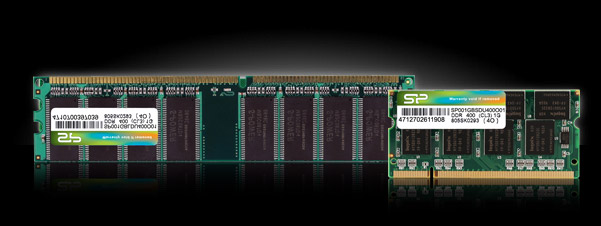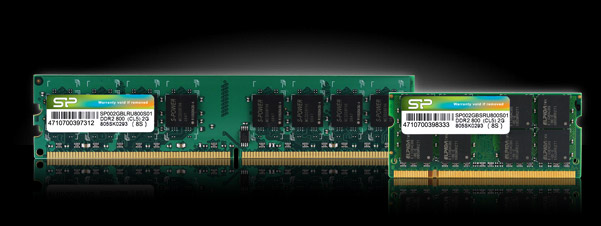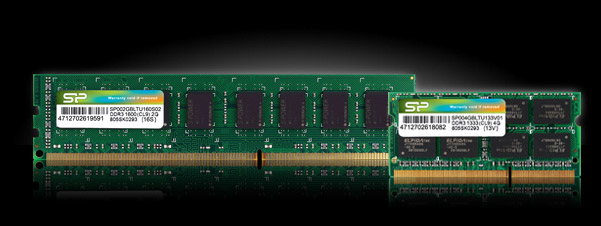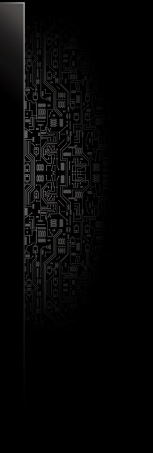 |
DDR SDRAM |
| |
DDR is the successor to SDRAM memory technology. The acronyms DDR stands for Double Date Rate. By name, DDR modules can carry twice the amount of the data on a clock signal frequency transmission, one on the rise and one on the fall side. Therefore, data that require SDRAM modules to perform two clock cycles to complete would only require one clock cycle on DDR memory modules. In theory, DDR memory modules would have twice the bandwidth of SDRAM modules operating at the same frequency! DDR memory module is available in 200MHz/266MHz/333MHz/400MHz frequencies and is also available in desktop (184 pins) and notebook (200 pins) variants. DDR memory modules are ˇ§NOTˇ¨ backward compatible with SDRAM module socket platforms. |
| |
 |
|
v
 |
DDR2 SDRAM |
| |
The biggest difference between DDR2 and DDR is DDR2 memory modules 4bit prefetch architecture and it doubles the transmission of DDR memory modules. Providing twice the bandwidth, DDR2 memory modules exceeded DDR memory moduleˇ¦s frequency restrictions (DDR 400ˇA200MHz frequency) for a greater bandwidth, more transistor count and lower power consumption. DDR2 memory modules use FBGA package technology for greater capacities, smaller dimensions and lower operating temperatures. The power consumption of DDR2 memory modules have been reduced from 2.5V to 1.8V which may extend the lifespan of the battery onboard the motherboard. Other DDR2 technologies such as On-Die-Termination (ODT) and Posted CAS are not included on DDR memory modules. DDR2 memory modules operate in 400MHz/533MHz/667MHz/800MHz frequencies and is also available in desktop (240 pins) and notebook (200 pins) variants.
|
| |
 |
|
 |
DDR and DDRII bandwidths |
| |
 |
| |
|
|
 |
DDR3 SDRAM |
| |
DDR3 technology is based on existing DDR2 memory modules with new and improved designs. DDR3 memory modules uses a 8bit prefetch architecture (double that of DDR2) and has a faster operating frequency, starting at 800 MHz. Currently, JEDEC standard DDR3 memory modules operate from 800MHz/sec to 1600MHz/sec, maximum frequency is at 2133MHz when overclocked. When using 64 bit memory interface, DDR3ˇ¦s peak bandwidth can reach between 6,400MB/sec to 17,000MB/sec. For power consumption, DDR3 consumes 20% less than DDR2, dropping to 1.5V from 1.8V. The initial applications of DDR3 memory modules were for high end PCs, workstations and servers that require mass data processing, 2D or 3D rendering tasks!
|
| |
 |
|
 |
What is dual channel and triple channelˇH |
| |
Dual channel configuration can dramatically increase a PCˇ¦s performance. Using even number of memory modules (two or four) in raid-like configurations to double the bandwidth, it greatly improves the bandwidth and responsiveness of the system. Even when using DDR2 400 memory modules, a maximum of 6.4GB/sec bandwidth can be reached!
In the past, the progress of memory modules on bandwidth and data transfer rate has had and maintained its discrepancies with the CPU frequency. With CPUs becoming faster and faster, its ˇ§Front Side Busˇ¨ (FSB) and ˇ§Memory Busˇ¨ bandwidths have become greater than single channel memory can provide! When Intel raised the FSB to 800 MHz and the memory bus to 6.4GB/sec, using DDR266 or DDR333 memory modules became insufficient in providing data. Platforms then turned to dual channel DDR2 400/533/667/800 working side-by-side to reach 6.4GB/sec bandwidths to meet FSB 800MHz needs.
Theoretically, triple channel shows a 33% bandwidth gain over dual channel configuration and currently, it is only supported by Intel X58 chipset motherboards with DDR3 memory modules. |
| |
|
|
|






